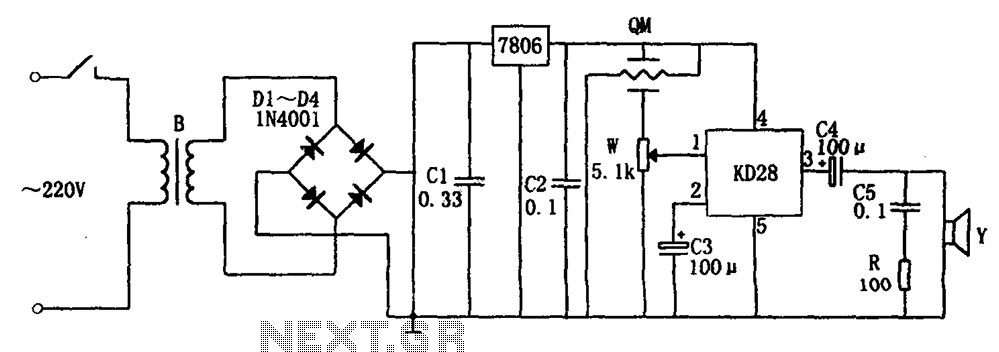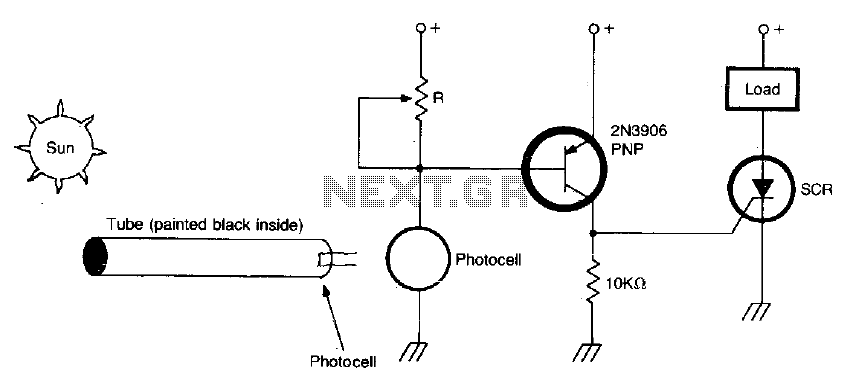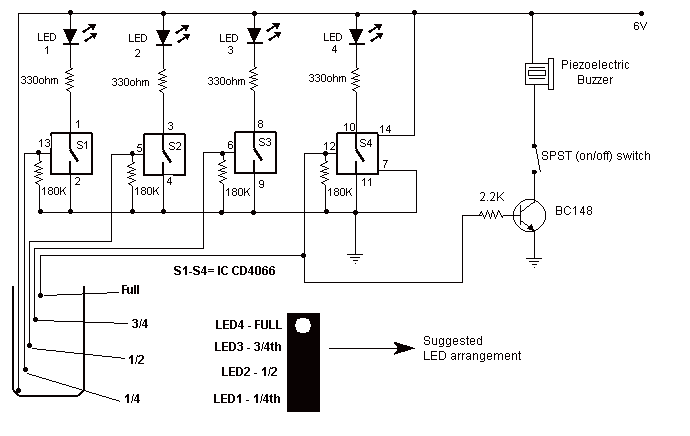
Door Alarm

The door alarm is designed to be mounted on the door handle and emits a beep when someone touches the door handle from the outside.
The door alarm circuit operates on the principle of detecting physical contact with the door handle. It utilizes a simple arrangement of resistors and a trimmer to form a voltage divider that triggers the beeping mechanism when the handle is touched.
The circuit includes the following components:
- R1: A 1MΩ, 1/4W resistor, which limits the current flowing through the circuit and helps in setting the sensitivity of the touch detection.
- R2: A 3.3KΩ resistor rated at either 1W or 2W, which works in conjunction with R1 to form a voltage divider that is sensitive to changes in resistance when the door handle is touched.
- R3: A 10KΩ, 1/2W trimmer resistor, which allows for fine-tuning of the circuit's sensitivity, enabling the user to adjust the beeping response based on the desired touch sensitivity.
The output of the circuit is connected to a beeping mechanism, such as a piezo buzzer or a small speaker, which will activate upon detecting the change in resistance caused by the touch on the door handle.
This door alarm circuit is suitable for home security applications, providing a simple yet effective means of alerting homeowners to potential intrusions. Proper placement on the door handle ensures maximum effectiveness, while the adjustable sensitivity allows for customization based on environmental factors.Door Alarm Hangs up on the door-handle Beeps when someone touches the door-handle from outside Free Circuit diagram: Parts List: R1 1M=1/4W ResistorR2=3K3 1 or 2W Resistor (See Notes)R3=10K 1/2W Trimmer.. 🔗 External reference
The door alarm circuit operates on the principle of detecting physical contact with the door handle. It utilizes a simple arrangement of resistors and a trimmer to form a voltage divider that triggers the beeping mechanism when the handle is touched.
The circuit includes the following components:
- R1: A 1MΩ, 1/4W resistor, which limits the current flowing through the circuit and helps in setting the sensitivity of the touch detection.
- R2: A 3.3KΩ resistor rated at either 1W or 2W, which works in conjunction with R1 to form a voltage divider that is sensitive to changes in resistance when the door handle is touched.
- R3: A 10KΩ, 1/2W trimmer resistor, which allows for fine-tuning of the circuit's sensitivity, enabling the user to adjust the beeping response based on the desired touch sensitivity.
The output of the circuit is connected to a beeping mechanism, such as a piezo buzzer or a small speaker, which will activate upon detecting the change in resistance caused by the touch on the door handle.
This door alarm circuit is suitable for home security applications, providing a simple yet effective means of alerting homeowners to potential intrusions. Proper placement on the door handle ensures maximum effectiveness, while the adjustable sensitivity allows for customization based on environmental factors.Door Alarm Hangs up on the door-handle Beeps when someone touches the door-handle from outside Free Circuit diagram: Parts List: R1 1M=1/4W ResistorR2=3K3 1 or 2W Resistor (See Notes)R3=10K 1/2W Trimmer.. 🔗 External reference





